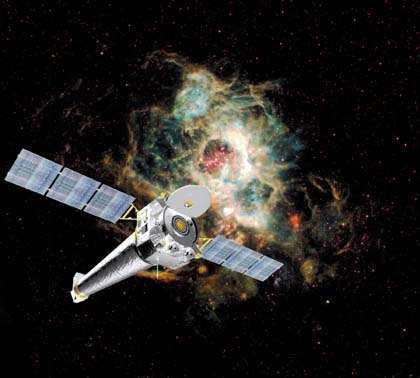Accretion around a young star

(Phys.org) -- The star TW Hydrae is located about 150 light-years from Earth in the direction of the constellation of Hydrae, the Water Snake. This star is relatively young, about 10 million years old, and has passed out of its infancy but is not yet mature. Astronomers are trying to understand the processes at work in stars at this stage in their lives because, for example, during this period planets might be developing from disks around the stars. The nature of the star's corona, the very hot (over a million degrees centigrade) extended gaseous outer atmosphere, is one such process. TW Hydrae provides a valuable example for two reasons: It is relatively close by and therefore bright, and it is rotating with its pole pointed nearly directly towards Earth, enabling scientists to view the star's polar region nearly face on.
Like other young stars of its size and age, TW Hydrae emits strong X-rays and lines of ionized hydrogen. These are thought to result from shocks generated as material flows onto the stellar surface, and from magnetically heated gas in the corona. SAO astronomers Andrea Dupree, Nancy Brickhouse, Steve Cranmer, Juan Luna, and Evan Schneider, along with colleagues, observed TW Hya with the Chandra X-ray Observatory, with complementary and simultaneous measurements from a suite of other telescopes. They continuously monitored the star over about seventeen days, during which time they observed both periodic and flaring events on the star.
The scientists, in a astronomical first, were able to track an accretion flare spectroscopically, providing direct information on how the excitation of the gas evolves during these events. The team successfully modeled the emission as arising in a sequence: A shock develops from accreting material and then flows down into a turbulent region, heating the star's photosphere. This ultimately leads to coronal heating and the development of stellar winds.
Provided by Harvard-Smithsonian Center for Astrophysics


















